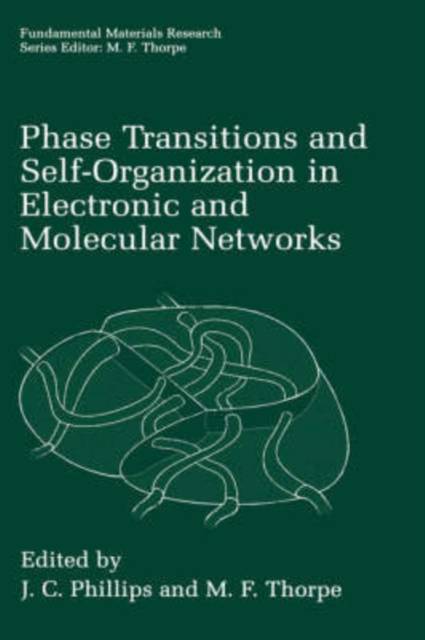
- Afhalen na 1 uur in een winkel met voorraad
- Gratis thuislevering in België vanaf € 30
- Ruim aanbod met 7 miljoen producten
- Afhalen na 1 uur in een winkel met voorraad
- Gratis thuislevering in België vanaf € 30
- Ruim aanbod met 7 miljoen producten
Zoeken
Phase Transitions and Self-Organization in Electronic and Molecular Networks
€ 251,45
+ 502 punten
Omschrijving
Advances in nanoscale science show that the properties of many materials are dominated by internal structures. In molecular cases, such as window glass and proteins, these internal structures obviously have a network character. However, in many partly disordered electronic materials, almost all attempts at understanding are based on traditional continuum models. This workshop focuses first on the phase diagrams and phase transitions of materials known to be composed of molecular networks. These phase properties characteristically contain remarkable features, such as intermediate phases that lead to reversibility windows in glass transitions as functions of composition. These features arise as a result of self-organization of the internal structures of the intermediate phases. In the protein case, this self-organization is the basis for protein folding.
The second focus is on partly disordered electronic materials whose phase properties exhibit the same remarkable features. In fact, the phenomenon of High Temperature Superconductivity, discovered by Bednorz and Mueller in 1986, and now the subject of 75,000 research papers, also arises from such an intermediate phase. More recently discovered electronic phenomena, such as giant magnetoresistance, also are made possible only by the existence of such special phases.
This book gives an overview of the methods and results obtained so far by studying the characteristics and properties of nanoscale self-organized networks. It demonstrates the universality of the network approach over a range of disciplines, from protein folding to the newest electronic materials.
The second focus is on partly disordered electronic materials whose phase properties exhibit the same remarkable features. In fact, the phenomenon of High Temperature Superconductivity, discovered by Bednorz and Mueller in 1986, and now the subject of 75,000 research papers, also arises from such an intermediate phase. More recently discovered electronic phenomena, such as giant magnetoresistance, also are made possible only by the existence of such special phases.
This book gives an overview of the methods and results obtained so far by studying the characteristics and properties of nanoscale self-organized networks. It demonstrates the universality of the network approach over a range of disciplines, from protein folding to the newest electronic materials.
Specificaties
Betrokkenen
- Uitgeverij:
Inhoud
- Aantal bladzijden:
- 454
- Taal:
- Engels
- Reeks:
Eigenschappen
- Productcode (EAN):
- 9780306465680
- Verschijningsdatum:
- 31/07/2001
- Uitvoering:
- Hardcover
- Formaat:
- Genaaid
- Afmetingen:
- 156 mm x 234 mm
- Gewicht:
- 834 g

Alleen bij Standaard Boekhandel
+ 502 punten op je klantenkaart van Standaard Boekhandel
Beoordelingen
We publiceren alleen reviews die voldoen aan de voorwaarden voor reviews. Bekijk onze voorwaarden voor reviews.







